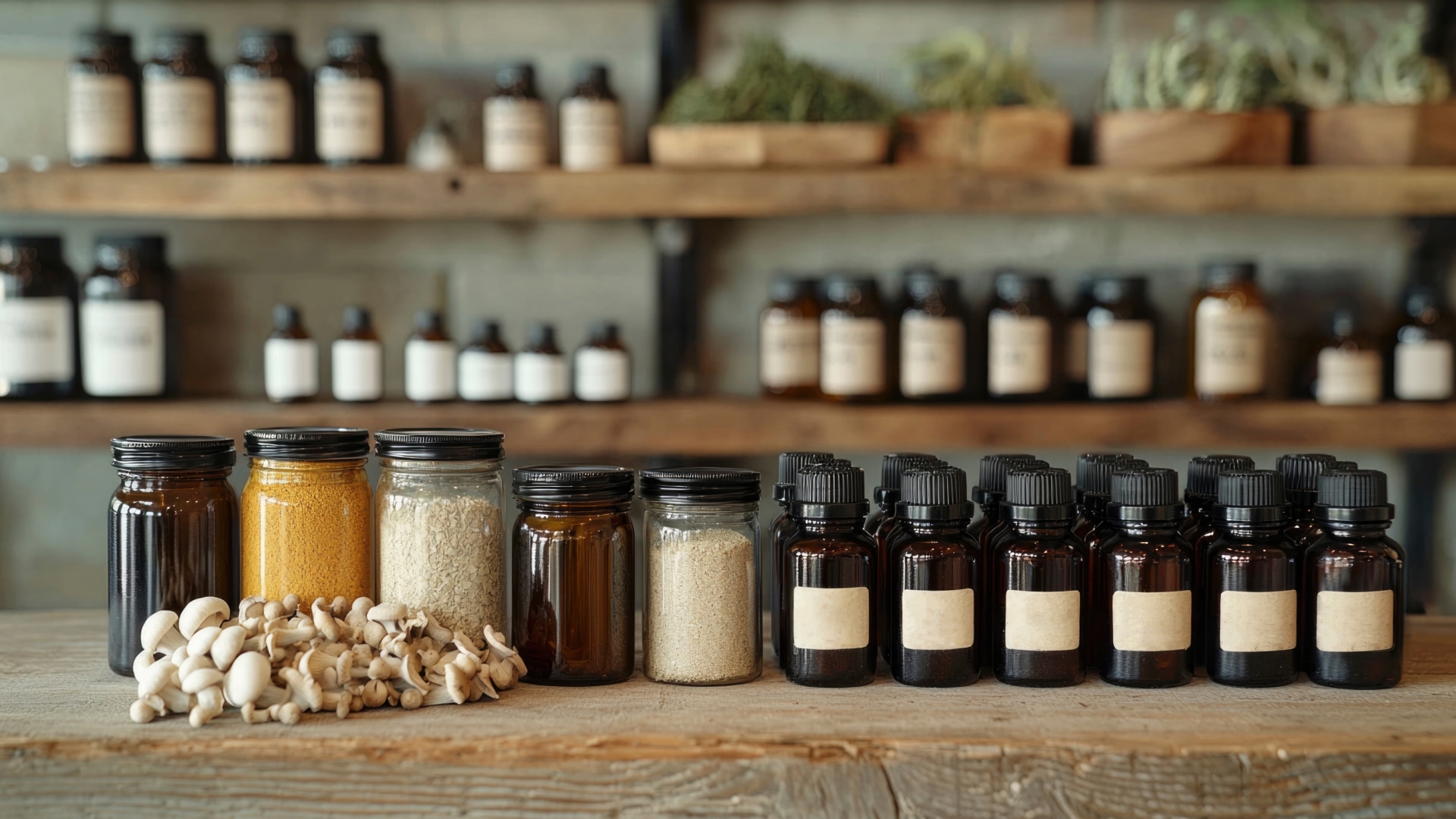The kratom industry has experienced substantial growth over the past few years since various consumers began using this botanical plant for its possible advantages.
The marketplace growth creates new issues regarding product transparency, together with security requirements and quality management standards.
Problems in the kratom industry stem mostly from the practice of selling proprietary blend items.
The stealthy combinations present themselves as attractive options, although they usually fail to deliver essential information for buyer judgment.
In this blog, we’ll discuss proprietary blend risks in addition to defining kratom ingredient knowledge and explaining why lab testing kratom products creates essential safety protocols.
What Are Proprietary Blends in Kratom?
Effective product labels do not show exact content quantities within proprietary blends, which are mixtures of diverse ingredients.
Product labels usually present ingredients first and finish with inclusive statements such as “proprietary blend” or “trade secret formula.”
The kratom market combines different kratom strains through proprietary blends that might also use botanicals, extra herbs, and other substances together with kratom.
At first glance, proprietary blends create an appearance of unique, effective products for manufacturers to develop.
The unclear nature of proprietary blends produces major questions about the contents of the products that consumers take.
The Appeal of Proprietary Blends
People promote proprietary blends as expertly designed chemical compositions that achieve targeted health results.
A proprietary mixture typically states it can help people relax, provide energy, and sharpen mental focus. Consumers who want particular health benefits often find such claims highly appealing.
Manufacturers use proprietary blends as a marketing tool to distinguish their products from rivals in competitive industries.
Unique blends enable businesses to bring in consumers who seek fresh or distinctive solutions to their needs. The attractive nature of these blends dominates the possible risks associated with them.
Why Don’t All Companies List Active Ingredients on Their Labels?
If kratom companies and dietary supplement manufacturers need to list the amounts of active ingredients on their product labels, why don’t all companies do so?
The regulatory requirements surrounding product labeling for kratom were uncertain in the past. The U.S. Food and Drug Administration has yet to identify the regulatory category that applies to kratom.
DSHEA states that when kratom products are intended for consumption, they should have dietary supplement/food labels unless drug claims are present.
The regulations that govern kratom products exist only in a few states across the United States. Product companies do not need to display active ingredient quantities on their labels according to all state regulations.
Legal requirements aside, there are ethical reasons that manufacturers should test kratom products and list active ingredients on the label.
Understanding Alkaloid Variability in Kratom Products
The leaves of kratom trees serve as the basic material to make Kratom products.
The psychoactive alkaloids exist among the many compounds that include cellulose, lignin, chlorophyll, and proteins found in leaves of all types but are specifically present in kratom leaves.
The alkaloid mitragynine represents the main alkaloid substance found in dried kratom leaf samples. Research has isolated 7-hydroxymitragynine as the strongest alkaloid substance.
Different batches of kratom contain varying amounts of its alkaloid substances. The final alkaloid composition in dried kratom leaf material depends on multiple elements that affect production.
The genetic composition of trees, soil conditions, and leaf age at harvest time, together with harvest season, serve as important factors in the leaf processing and drying methods completing this list.
The same as many natural products there exists a lengthy list of substances.
Consequently, some kratom leaf products can have higher concentrations of active ingredients than others. So one gram from the Batch
A won’t have the same concentration of alkaloids as one gram from Batch B. Accordingly, many kratom laws specify that companies must list the amount of mitragynine and 7-hydroxymitragynine on the label.
These state laws apply to all products derived from kratom leaves, not just powder or crushed leaves. It is similarly important for kratom extract product labels to clearly display the weights of active components.
These products are highly concentrated, so it’s essential to ensure consumers are fully informed about their strengths before they consume them.
The Risks of Proprietary Blends in Kratom
1. Lack of Transparency
Unrevealed information stands as the leading safety concern when using proprietary blends. The disclosure of proprietary blends on labels makes it impossible for consumers to determine the actual ingredient quantities present in the products.
The listing of proprietary blends makes it nearly impossible to establish the strength of the kratom compound and identify all active substances within the blend.
A proprietary blend typically incorporates low-quality kratom together with small amounts of high-quality kratom strain and other unspecified materials.
The lack of specific ingredient ratios prevents consumers from understanding the correct value and effectiveness measures of the product.
2. Potential for Undisclosed Ingredients
Total disclosure of ingredients is blocked when manufacturers opt for proprietary blends. The quality of kratom can be compromised because some manufacturers add synthetic substances or economically beneficial ingredients.
Unlisted ingredients in proprietary blends create dangerous health threats since they may be harmful to people who have allergies or medical conditions and sensitivities.
The worst outcome from proprietary blends involves the dangerous presence of contaminants and substances that negatively affect medication interactions along with supplements.
3. Inconsistent Dosage
The quantity of kratom combined with its specific strain determines how its effects manifest in users.
Retrieving detailed information about kratom content and other active components becomes difficult when using proprietary blends because the actual dosage remains unknown.
Each batch variation of these blends results in uncertain effects that hinder consumers from reaching their intended results.
A single proprietary blend might have more of a stimulating strain, but another batch contains mostly sedating strains.
The erratic nature of proprietary blends generates displeasure among users and may create security risks since they need consistent effects from their products.
4. Misleading Marketing Claims
Products that use proprietary blends tend to feature strong marketing statements that research does not prove.
A product that promises “ultimate relaxation” and “maximum energy” does not reveal its actual ingredients, combined with their precise amounts to customers.
The marketing claims make consumers believe they receive premium and functional products, though actual product quality proves different from what consumers expect.
The Importance of Understanding Kratom Ingredients
Consumers need to focus on determining all kratom ingredients present in their purchased products to reduce potential risks. Here are some key factors to consider:
1. Strain Specificity
Each kratom strain possesses distinct characteristics among its many strains. Four widely known strains of kratom are Maeng Da together with Bali Borneo, and Malay, which demonstrate separate effects.
The purchase of kratom should include products that show precise information about strain identity and place of cultivation.
The provided information enables customers to select products that match their requirements.
2. Ingredient List
The label of a transparent product must contain a comprehensive list detailing every component which includes the specific kratom species and its added botanicals or additives.
Products should refrain from using imprecise terms through “proprietary blend” as they do not offer essential composition information.
3. Additives and Fillers
You should stay alert to products that include ingredients exceeding the necessary components. Some additives present no harm at all but additional substances risk weakening the strength of the kratom and potentially generating adverse responses.
The Role of Kratom Lab Testing
Testing kratom in labs constitutes an important approach to verifying both the security and premium quality of kratom merchandise.
Respected kratom producers execute third-party analysis of their products to establish both their purity and their potency, together with their safety characteristics. Here’s why lab testing matters:
1. Verification of Ingredients
Certified laboratories can verify if kratom alkaloids mitragynine and 7-hydroxymitragynine exist in the sample and determine their concentrations by performing tests.
The revealed information enables people to comprehend how strong the product is so they can manage their dosage accordingly.
2. Detection of Contaminants
Several harmful contaminants, like heavy metals together with pesticides and bacteria, may exist in kratom products due to unclean manufacturing methods.
Through lab testing, professionals can detect dangerous substances in products to verify their safety as edible substances.
3. Transparency and Trust
Manufacturers who subject their products to laboratory testing reveal their dedication to open monitoring standards as well as product safety concerns for consumers.
Lab reports, together with certificates of analysis (COAs) that manufacturers make available help establish trust among their customers while setting their products apart from untrustworthy competitors.
How to Choose a Safe and Transparent Kratom Product
The selection of kratom products demands a focus on transparent blends with high quality because of their associated risks. Here are some tips to help you make an informed decision:
1. Research the Brand
Researching the brand should be your first step before making any kratom purchase. You should buy products from firms that demonstrate both top-notch quality and complete openness to their customers.
Check customer reviews, testimonials, and third-party ratings to gauge the brand’s reliability.
2. Read the Label Carefully
A reliable kratom product needs complete information on its packaging label. Check for details about the strain identity while observing where the product came from and what ingredients are included.
Proprietary blends in products should not be used because the specific components remain undisclosed.
3. Check for Lab Testing
Products that receive independent third-party lab evaluation should be your preference. Brands with solid reputations offer laboratory reports through their website and upon specific requests.
The laboratory reports demonstrate important aspects of both product components and safety protocols.
4. Start with Small Doses
Initiate your experience with new kratom products through low-dose trials that help you check the reaction effects.
This assessment technique enables you to stay clear of dangerous side effects while verifying if a product matches your requirements.
The Future of the Kratom Industry
As the kratom industry continues to grow, there is a growing need for regulation and standardization.
While proprietary blends may offer short-term benefits for manufacturers, they ultimately undermine consumer trust and safety.
By prioritizing transparency, quality, and lab testing, the industry can build a stronger foundation for long-term success.
Consumers also play a crucial role in driving positive change. By demanding transparency and supporting reputable brands, they can encourage manufacturers to adopt higher standards and prioritize consumer safety.
Final Thoughts
The use of proprietary blends in kratom products creates multiple problems in which manufacturers hide ingredients, make misleading marketing statements, use inconsistent dosages, and provide no transparency about the contents.
Protecting yourself from kratom-related risks requires selecting products with transparent labeling as well as complete ingredient lists alongside third-party testing certification.
People should exercise caution when using kratom because it provides some benefits as they make their choices.
When you select open-source quality products that show all contents, you can experience kratom benefits without excessive health risks.
Your health, together with safety, will always take precedence. Identify brands that value openness in the kratom market by staying educated and raising questions regarding their transparency records.
More Readings For You:













